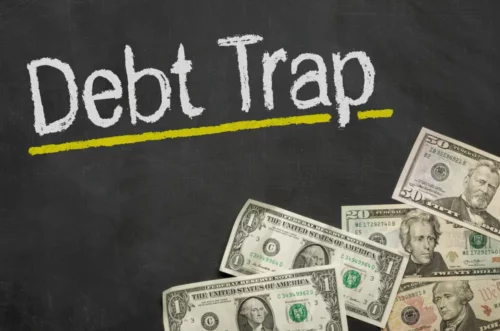Debt trap diplomacy is a term that has gained traction in recent years. It describes a controversial strategy where powerful countries allegedly provide excessive loans to weaker nations.
The intent, critics argue, is to gain political or strategic leverage when the borrower cannot repay. This concept has sparked widespread debates in the world of international relations.
Understanding this phenomenon and its implications is crucial as it impacts global politics and economic development.
Debt Trap Diplomacy
Debt trap diplomacy involves providing loans to nations, typically for infrastructure projects. These loans often come with terms that critics describe as unfavorable to the borrower.
The borrowing country may struggle to repay, leading to concessions that benefit the lender. This term is often associated with China’s Belt and Road Initiative (BRI), a global development strategy launched in 2013.
Under the BRI, China finances infrastructure projects across Asia, Africa, and Latin America, often in countries with limited access to other funding sources.
Proponents of this strategy argue that these loans help developing nations build necessary infrastructure, fostering economic growth. However, detractors claim it creates dependency, leaving nations vulnerable to exploitation.
The lender may gain control over strategic assets, such as ports or railways, or exert political influence, which can undermine the sovereignty of the borrowing nation.
Key Examples of Debt Trap Diplomacy
One of the most cited examples of debt trap diplomacy is Sri Lanka’s Hambantota Port. In 2010, Sri Lanka accepted a Chinese loan to build the port, despite concerns over its economic viability.
Unable to repay the debt, Sri Lanka handed over a 99-year lease of the port to a Chinese state-owned company in 2017. This event raised alarms about the potential for strategic exploitation under the guise of development assistance.
Pakistan’s Gwadar Port is another case often discussed in this context. The port is a critical component of the China-Pakistan Economic Corridor (CPEC), part of the broader BRI.

While the port has strategic significance for China, Pakistan faces mounting debt tied to CPEC projects. Critics argue that these debts could lead to long-term economic challenges and diminished control over critical infrastructure.
African nations have also experienced challenges linked to large-scale Chinese loans. Kenya’s Mombasa Port and Zambia’s power company have faced scrutiny due to fears of asset seizure if debts remain unpaid.
These cases highlight concerns about the sustainability of borrowing for ambitious infrastructure projects and the risks of defaulting on loans.
Criticisms and Counterarguments
Critics of debt trap diplomacy argue that it exploits economically weaker nations. They suggest that loans often come with high-interest rates or terms that favor the lender.
This can lead to unsustainable debt burdens, forcing borrowing nations into concessions. Strategic assets, such as ports or transport hubs, are frequently targeted due to their geopolitical importance.
On the other hand, some argue that borrowers share responsibility for the outcomes. Poor financial management, corruption, and lack of due diligence in loan agreements can exacerbate debt problems.
Supporters of China’s lending practices argue that these projects create opportunities for economic growth, job creation, and improved infrastructure.
They also contend that criticism of debt trap diplomacy may reflect geopolitical competition rather than objective analysis.
Global Response to Debt Trap Diplomacy
The rise of debt trap diplomacy has triggered concerns among major global powers. The United States and European nations have voiced opposition, often framing it as a challenge to global stability.
Initiatives like the Blue Dot Network aim to provide alternative financing options for developing nations. This U.S.-led program seeks to promote transparent, high-quality infrastructure investment, countering the influence of the BRI.

Countries and international organizations are also advocating for greater transparency in loan agreements. Encouraging diversification of funding sources can help nations avoid over-reliance on a single creditor.
Additionally, fostering partnerships with multilateral institutions, such as the World Bank or International Monetary Fund, can provide more sustainable financing options.
Pro Tips for Policymakers
Policymakers in developing nations must carefully evaluate the long-term implications of foreign loans.
Conducting rigorous financial and legal assessments of proposed projects is essential to avoid unfavorable terms. Strengthening domestic institutions and promoting good governance can help reduce vulnerability to debt traps.
Public-private partnerships can also play a significant role in funding infrastructure development.
By engaging private sector stakeholders, nations can reduce dependence on foreign lenders. Diversified funding sources contribute to financial stability and greater negotiating power in international agreements.
Frequently Asked Questions
What is Debt Trap Diplomacy, and how does it work?
Making loans to gain strategic or political advantages.
Which countries are most often accused of practicing Debt Trap Diplomacy?
China, particularly through its Belt and Road Initiative.
What are some examples of nations impacted by Debt Trap Diplomacy?
Sri Lanka, Pakistan, Kenya, and Zambia face economic challenges.
How can developing nations avoid falling into a debt trap?
Ensure transparency, diversify funding, and strengthen financial governance.
China’s global infrastructure strategy accused of fostering debt traps.
Conclusion
Debt trap diplomacy remains a contentious issue in global politics. While it offers opportunities for infrastructure development, it also poses significant risks for borrowing nations.
Understanding the dynamics of this strategy is crucial for policymakers, analysts, and global citizens.
By promoting transparency, accountability, and ethical lending practices, the international community can work towards balanced economic growth that benefits all parties involved.


 Tags:
Tags:










